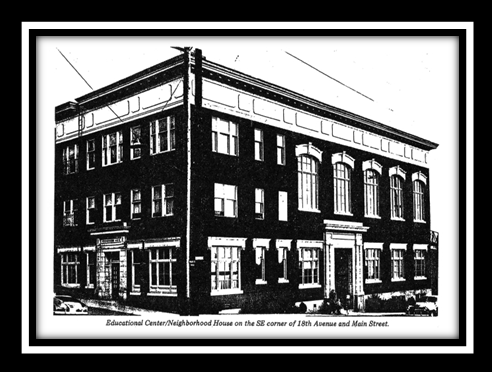
May is Jewish American Heritage Month, a perfect time to explore the rich history of Neighborhood House. While many view Neighborhood House as a workplace, where we spend 40 hours a week in various departments and classrooms, it’s easy to lose sight of the broader purpose behind our work. It’s crucial to remember why Neighborhood House exists and how it became a place for such meaningful work. As many are aware, Neighborhood House has been serving Seattle communities for over 115 years. Let’s take a look at the pivotal early years that laid the foundation for our organization as it stands today.
In 1900, the National Council of Jewish Women Seattle Section was established through the determination of 34 Jewish women committed to serving marginalized communities. This volunteer organization, guided by Jewish principles, was dedicated to enhancing the well-being of women, children, and families. The initiative began with a meeting at the home of Mrs. Sigismund Aronson, where plans were made to gather all Jewish women in Seattle. Subsequently, on November 19, 1900, these women convened at Morris Hall on 9th Avenue and Yesler Way to draft a petition for the creation of a Seattle section of the NCJW. During this gathering, departments such as Religion, Sabbath School, Membership, Social, and Philanthropic were established. Finally, on December 13, 1900, the inaugural official meeting was led by Merle (Dollie) Degginger.
One of its landmark achievements came only six years later with the establishment of Settlement House in 1906. This initiative provided essential support to hundreds of new immigrants, offering services such as medical and employment assistance, legal aid, social integration programs, and education.
Settlement House began its journey when the SCJW Committee on Philanthropy leased the lower rooms of a residence on 12th Avenue and Washington Street. One of its initial endeavors was the creation of a sewing school for 30 girls. Recognizing the thirst for knowledge among new immigrants, the committee advocated for reading rooms at the Seattle Public Library. Additionally, Settlement House provided free public bathing rooms to the community, considering that many immigrants lived in buildings with only cold water. It’s possible that this initiative influenced the inclusion of bathing rooms and showering stalls in some of our current sites today.
In September 1916, the Settlement House underwent a transformation, adopting the name “The Education Center” and relocating to the intersection of 18th Avenue and Main Street. The center continued to offer its successful sewing class, which remains operational at High Point to this day, which had grown to accommodate 142 students. Additionally, it hosted an evening school for immigrants and refugees to learn English, meeting twice a week. In 1921, Hannah Pelz Schwartz established the “nutrition clinic,” where mothers and children were provided with breakfast and dinner and received instruction on preparing American foods and understanding portion sizes. These represent just a handful of the programs available to Seattle communities at that time.
In 1947, The Education Center transitioned into Neighborhood House, symbolizing its expanding commitment to not only educational services but also various other human service needs. While initially serving a significant number of Jewish community members, the organization remained inclusive, never turning away other immigrants or citizens in need. During the next few years, the agency transitioned away from the Council of Jewish Women as its primary leadership and Board members.
In August 1956, Neighborhood House became an independent nonprofit agency. Shortly after, it reached an agreement with the Seattle Housing Authority (SHA) for building space at SHA’s Yesler Terrace housing community. This pioneering move established a distinctive relationship, as no other housing authority in the country had integrated a multi-service agency into a public housing community to serve its residents. Subsequently, Neighborhood House expanded its reach by opening service centers in public housing communities across King County.
As we contemplate the broad impact of Neighborhood House in the present day, it’s truly heartening to witness the evolution of our organization over time and the dedication of the National Council of Jewish Women Seattle Section that guided its path for so long, consistently remaining dedicated to our core mission of serving and empowering our community. Looking back to our origins, we can clearly see the foundation upon which each of our current programs has been built. Our continued efforts serve as a testament to our unwavering commitment to enriching the lives of the communities we serve.
Written By: Syretta Warren
If you’d like to learn more about our Jewish History, here are some of the references for this article:
University Of Washington Jewish Studies Program
National Council of Jewish Women Seattle Section records, 1900-2019
Hannah Pelz Schwartz: “Beloved House Mother” of the Seattle Settlement House
